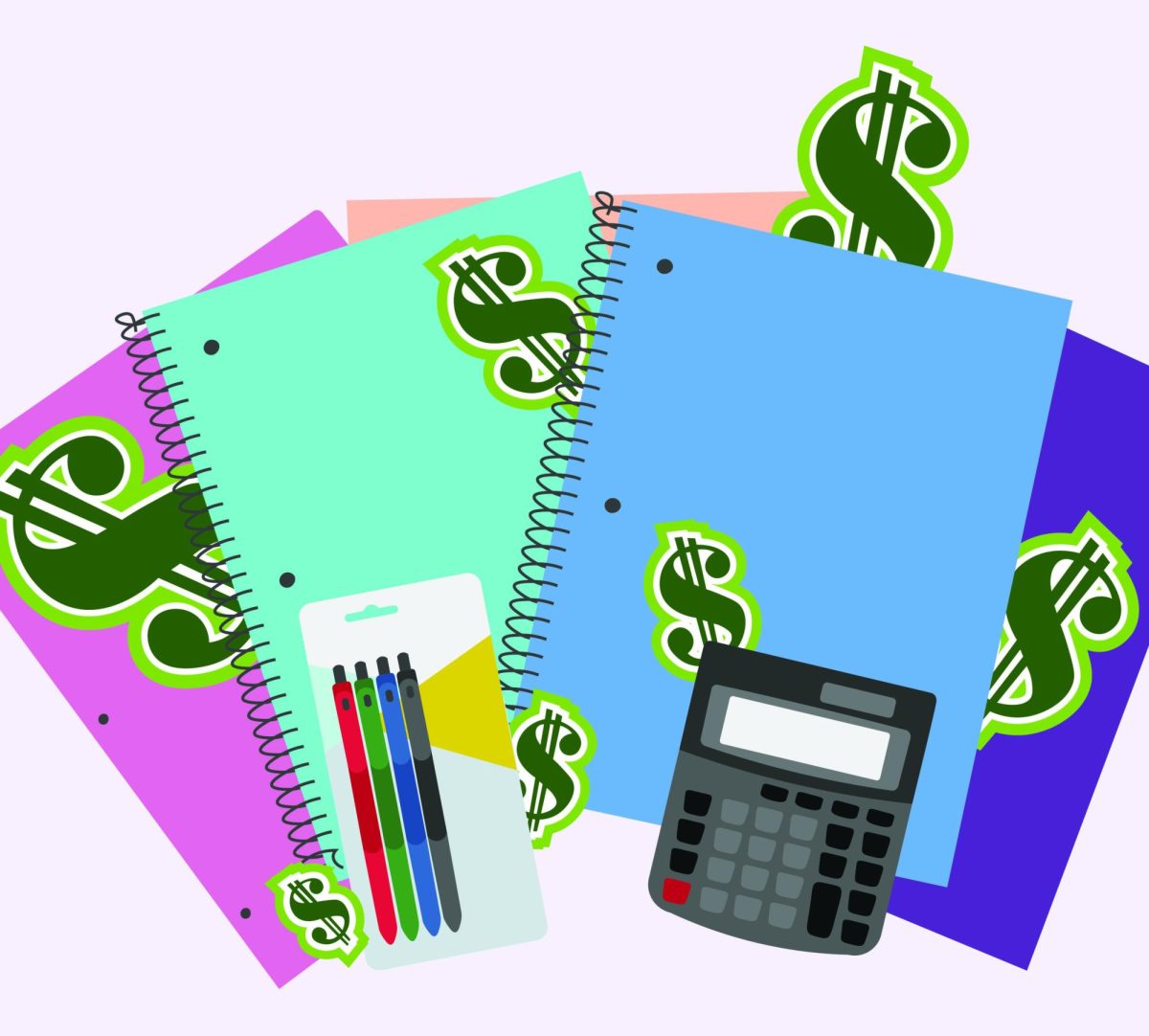The Kent State Bookstore offers an assortment of items needed for everyday college life, including textbooks, school supplies, clothing and much more.
While it’s helpful that these products can be found in the center of the university and just a short walk away from any on-campus living arrangement, some students feel the prices of these goods are too high for their liking.
Sam Darvishi, a junior computer engineering major, said he’s bought textbooks and souvenirs from the bookstore and felt the prices were “inflated.”
“I think that most students couldn’t afford it,” Darvishi said.
Melody Anderson, a freshman interior design major, shared a similar sentiment to Darvishi. She shopped at the bookstore for textbooks and clothing and was thrown off by the “really high” prices.
“We’re paying students, and students are the emphasis,” Anderson said. “We don’t have a lot of money.”
Despite student concerns, Cesquinn Curtis, the associate vice president of the Division of Student Affairs, believes bookstore pricing is fair toward students.
“There is a wide gamut of options that are low priced and student price conscious,” he said. “Kent State and our strategic partner, Barnes & Noble, are committed to affordability, student success and convenience.”
So, what are prices like at the bookstore? And what is Kent State doing to monitor these prices?
Textbooks
Textbooks are a lifeline for college students, as many are required or recommended for courses and student benefit. In spite of their importance, the prices sometimes drive students away.
Websites such as Amazon, eBay and Chegg also sell textbooks that could be less pricey. Even some large retail stores such as Target and Walmart sell textbooks for potentially lesser costs.
Anderson said that cheaper options can be found elsewhere.
“I ended up searching around with the help of my mom and dad, and we were able to find a website that had the book I needed for half the price,” she said.
The Kent State Bookstore is operated by Barnes & Noble College, which supplies all available textbook products. Curtis said this partnership offers students a price-match guarantee program to lighten the burden of costs.
“This allows students to match textbooks from Amazon, Barnes & Noble, other brick-and-mortar stores and even some third-party sellers,” he said. “This initiative helps to keep up with major retailers like Walmart and Target.”
Curtis said another cost-saving initiative is the Flash Books program. According to Curtis, Flash Books has saved students over $2,700,000 in textbook costs over the last year.
“The Flash Books program was Kent State homegrown to help tailor and curve the costs that students would have,” he said.
The bookstore also works with faculty to lower textbook costs for students. Curtis said faculty members will identify text options for the course so the bookstore can search for cheaper options or a digital component.
Curtis added that other cheaper options for textbooks include buying used books, renting them for a semester and a buyback program where the bookstore buys the textbook back from students at the end of the semester to help students recover the cost.
Clothing
Clothing makes up another large aspect of bookstore items. All bookstore clothing and apparel is merchandise from Fanatics and Lids.
These businesses supply Kent State with school-spirited clothing such as caps, t-shirts and sweatshirts. However, some of these items may be out of students’ price ranges.
Most t-shirts are priced at around $25, with some other options ranging from $16 to $45.
Sweatshirt prices vary greatly; most options are priced at $75 with others ranging from $45 to $95.
To Anderson, some of these prices are just too steep.
“It’s just a little bit difficult to justify spending $70 on a sweatshirt that says ‘Kent State’ on it,” she said.
Curtis said the biggest priority for bookstore apparel is to maintain quality, which could translate to higher prices for students. This includes avoiding selling from manufacturers that use sweatshops.
“The cheaper you go, you have to worry about how they’re producing this stuff as an organization,” he said. “You don’t want to spend $10 on a shirt and the sleeve falls off.”
Curtis also said the bookstore makes sure to provide a mix of more affordable and inexpensive options that are more accessible to students. He added other strategies for cheaper clothing, including continuous sales and partnerships with athletics for discounts.
School supplies
Everyday items like pencils, pens, notebooks and folders are essential for a college student.
While these products can be purchased at the bookstore, they could also be found for lesser prices at major retailers like Target and Walmart.
The bookstore sells Five Star one-subject notebooks for around $8, three-subject notebooks for $11, five-subject notebooks for $14 and Five Star four-pocket folders for $3.
Those same products can be purchased at Walmart for $3.36, $4.78, $5.68 and $1.68. At Target, the items can be found for $2.99, $4.79, $6.99 and $1.69.
Despite the cost difference, Curtis said the bookstore offers a plethora of school supplies options that range in price.
“There are expensive options, and then there are economical options,” he said. “Just like at any store, so even if I were to go to Walmart, there are things I can get for a little bit and things I can get for a lot.”
The bookstore’s future
At the moment, the university is in its final year of its contract with Barnes & Noble, and the university is still in the process of finding a new vendor. Some replacements include eCampus, Biblio, Follett and others. Curtis also didn’t rule out a renewed partnership with Barnes & Noble.
“We’re going to move forward with whoever proposes and aligns with our commitment and vision,” he said.
As far as future initiatives to lower the cost of bookstore goods, Curtis said the biggest is to expand the Flash Books program. According to Curtis, the program has grown from 19 courses in 2018 to 286 courses in 2024.
“In the fall of 2024, 18,052 students opted into the program,” he said. “Students are telling us this program works and it is more economical.”
While Curtis believes the bookstore offers students a wide range of low-priced items, he said there is still room to grow to make these prices more affordable for students.
“This is a mission of the university to make sure that we are paying attention to the price hike that the world is experiencing when it comes to the cost of college,” he said.
John Engoglia is a beat reporter. Contact him at [email protected].




Joan Iarussi • Feb 15, 2025 at 8:44 am
Article does not explain what the Flash Books program is.